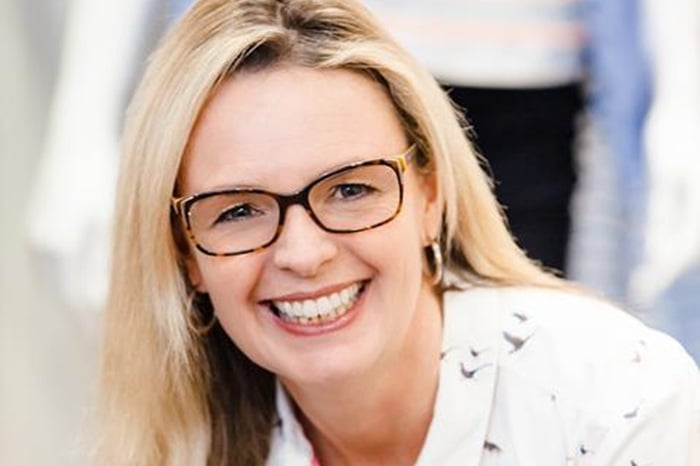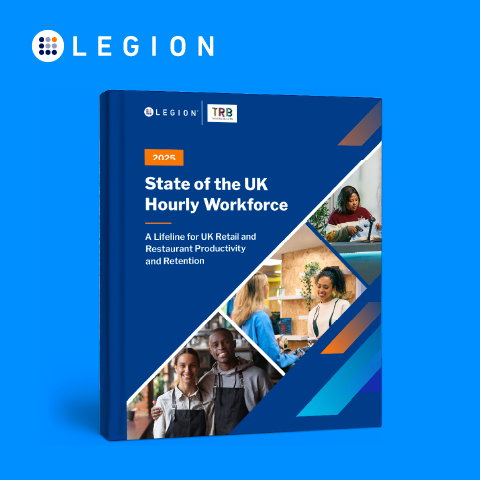Conversation with… Kara Groves, chief executive of Wyse London
Here we chat with Kara Groves, the recently appointed chief executive of Wyse London, to discuss her journey through the world of retail and what lies ahead for the fashion brand, including expansion in the UK and US.
Although she didn’t set out to pursue a career in fashion retail, a newspaper clipping and a twist of fate led Groves into the world of merchandising where her blend of creativity, commercial instinct and natural flair for numbers set her apart and has since defined her career.
We noticed you started your career in merchandising with retailers like Dorothy Perkins and Miss Selfridge. What attracted you to retail, and how did you get into it?
I like to call merchandising “fashion maths.” As for how I got into it, my boyfriend at the time didn’t want me to work on campsites in France, even though I was studying French as part of my degree. So, he cut out an advert from The Guardian newspaper for me.
I went for an interview with the Burton Group, as it was known then, and just a week after graduating, I landed a role. The recruiter gave me the option of Topshop, Dorothy Perkins, or Burton Menswear. Since my local store was a Dorothy Perkins, I chose that one. Looking back, it was quite serendipitous, and he played an unexpected role in launching my retail career.
Never Miss a Retail Update!It sounds like you took to it like a duck to water…
To be honest, I didn’t even realise merchandising was a career option. I was aware of buyers – who were quite famously known as “lady buyers” back then – but I didn’t know I could apply my love of numbers to something as tangible and emotional as fashion.
Once I got into it, though, I never looked back. I absolutely loved it from the start. Merchandising is all about balancing design, buying, and the commercial side of the business. It’s where creativity meets analytics. I always say, “Product is king,” but a great merchandiser who has an affinity for the product and can take calculated risks can make a real commercial impact.
Merchandising seems like an art – predicting what will sell and what customers will love. Would you agree?
It is an art, but it’s also a skill you refine over time. For example, when I interviewed at Wyse London, part of the process was assessing a rail of products and ranking them from best to worst sellers. That’s something you hone throughout your career.
Retail is about making more right decisions than wrong ones. As long as you truly understand your customer and stay in tune with their preferences, you increase your chances of success. That’s the joy of it.
Your career trajectory is impressive, moving from merchandising to chief commercial and chief operating officer roles at brands like Joules and Mint Velvet, then becoming CEO of Bambino Mio. How did you achieve all that?
Hard work played a big part. I joke about this, but it’s true -I’ve fallen asleep with a calculator on my face more than once! You also need to create your own luck and seize opportunities when they arise.
When I joined Joules, it was a big change for my family. We relocated, and at the time, I had a three-year-old and a five-year-old. But I knew it was a fantastic opportunity. I’ve always thrived in founder-led businesses because founders bring a certain “magic dust”- they turn a retailer into a brand.
My career has developed quite organically. I built my merchandising expertise first, then moved into buying, then sourcing, supply chain, and wholesale. At Joules, I suggested taking on the wholesale channel as well, because I could bridge the gap between what retailers needed and what we were sourcing and buying.
At Mint Velvet, my role expanded further to include finance, ecommerce, and international growth. Then came Bambino Mio, which was a bit of a departure, but I was drawn to its purpose. The brand focused on reusable nappies, and when you learn that nine million disposable nappies end up in UK landfills every day, you realise the importance of what they were doing. It was incredibly fulfilling to help transition the business to its next stage.
And now, you’re chief executive at Wyse London. What attracted you to the role?
I actually saw a LinkedIn post from Suzy, the outgoing CEO, whom I’d worked with at Dorothy Perkins and River Island. We hadn’t seen each other for 25 years, but I messaged her immediately, and within two minutes, she replied!
I did go through the full interview process, including assessing a rail of product and meeting Marielle Wyse, founder of the company, multiple times. I had known of Wyse London from afar – I first encountered the brand during Chelsea Flower Show, where the theatrical window displays on King’s Road caught my eye.
Suzy knew I’d give the role 120%, and Marielle needed to ensure we had the right chemistry. In a small, founder-led brand, that connection is crucial. I started in January, and it has been an incredible experience.
Wyse London has a unique approach to customer engagement. Can you tell us more about that?
Marielle is truly customer centric. We often refer to “she” when discussing our customer – “What does she want?” “She likes this neckline,” “She appreciates this scalloped trim.” It’s a very personal approach.
We also focus on making women feel their best – our products are carefully designed with details like elasticated waists and flattering necklines. It’s about elevating everyday fashion.
Marielle’s background in television and her ability to connect through social media is a huge asset. She brings products to life on Instagram Lives, and the customer response is instant. For example, when she casually asked followers where Wyse should open its next store, we received an overwhelming amount of feedback. That kind of direct engagement is incredibly powerful.
A recent Wyse London press release mentioned your vision for expanding both in the UK and the US. Can you tell us more about that?
A key part of our strategy is our direct-to-consumer model, which has been instrumental in our growth. We initially launched in the US with a catalogue drop four times a year, but we’ve increased that to ten times annually, ensuring more frequent engagement with our customers.
To successfully penetrate the US market, our head of marketing has become an expert in sourcing paper for catalogues, acquiring cold data lists, and building a strong customer database. This approach has fuelled significant growth over the past 18 months, and we expect around 12-13% of our revenue to come from the US this year.
We’re also considering additional strategies, such as opening a pop-up store in New York. However, we’re still evaluating whether this would be a strategic PR move in the long term. Other potential opportunities include collaborating with premium retailers through a dropship model, which would further strengthen our omnichannel approach. It’s an exciting time, but we’re focused on ensuring sustainable and profitable growth.
What do you see as the biggest challenges and opportunities for a fashion business like yours in the coming years?
The challenge isn’t a lack of opportunities; rather, it’s about prioritising and executing them effectively without overextending our lean team. I see multiple growth levers, but the key is managing them in a way that aligns with our brand and customer needs.
One of our core focuses is growing profitably while maintaining financial prudence. We are self-funded, so managing cash flow carefully is crucial. Many brands fall into the trap of vanity projects that drain resources. We’re keen to ensure every investment, whether in stock, retail presence, or marketing, yields meaningful returns.
Your role sounds incredibly complex. Do you think great merchandisers are born with an instinct for it, or can it be taught?
I firmly believe that the best merchandisers possess an innate mental agility and instinct for what will succeed. You can build upon that skill with experience, but there’s an element of intuition that can’t be taught.
Data plays a crucial role, but knowing how to interpret and act upon it is where the real skill lies. In my view, it’s a blend of analytical thinking and gut instinct that drives success in merchandising.
Have there been any standout mentors who have helped shape your career?
Without a doubt, my husband. He’s been my sounding board – whether over a gin and tonic or a cup of tea. He listens, provides perspective, and helps me navigate challenges. Sometimes, the best advice is knowing when not to make a decision and let things play out.
I’ve also been fortunate to work with incredible individuals throughout my career. One of my previous chairmen taught me the importance of staying calm under pressure, which was invaluable when managing a business sale under financial constraints.
How do you think retail has changed since you started?
When I began, retail was much simpler – bricks-and-mortar stores and product. Now, it’s a constantly evolving, multi-dimensional landscape. Technology has completely transformed how we operate. I monitor sales minute-by-minute via Shopify and use real-time data to inform business decisions instantly. The challenge today is managing the sheer volume of data.
Given the rapid advancements in technology, how did you adapt to these changes without feeling overwhelmed?
I take an open-minded approach. I’m not intimidated by technology, but I also don’t feel the need to master every tool myself. What matters is knowing how to extract valuable insights and ask the right questions. My team includes experts who can handle complex data analytics, and I focus on how to apply that information effectively.
If you could give advice to your younger self, what would it be?
I tell my kids this all the time: Rules are for breaking. Not in a reckless way, but in the sense that you shouldn’t feel constrained by convention. Also, control the controllables and don’t waste energy on things beyond your influence. Lastly, I firmly believe in making your own luck. Hard work and perseverance often lead to the opportunities you seek.













